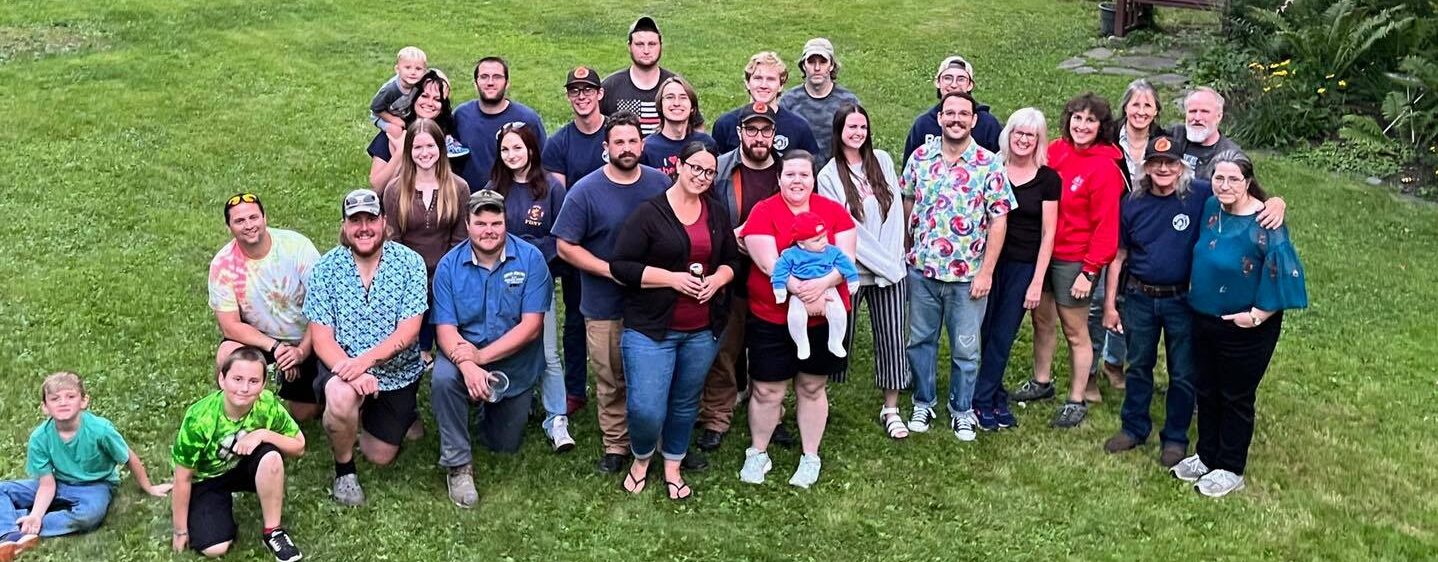Union-News (Springfield, MA)
Author: MARLA A. GOLDBERG
HAMPSHIRE COUNTY. MA – Volunteer fire departments in Hampshire County’s hilltowns may go the way of the bucket brigade unless more young people step forward to become firefighters, some fire officials say.
Hilltown fire officials say they are in chronic need of volunteers, and that their departments are aging because people in their late teens and twenties aren’t joining in the numbers they did 20 years ago.
“As a general rule, the volunteerism is falling off,” said Cummington Fire Chief Bernard Forgea. Forgea said there were 40 or 50 people on his department in the 1970s, while now there are 34 fire and ambulance volunteers. Other hilltown chiefs reported similar declines.
David Alvord, Plainfield’s deputy fire chief, said a volunteer shortage, leaves of absence, vacations and people moving away have reduced his department to a bare bones level of 15 people, and not all are trained to do every job.
While most of the hilltown fire officials say they are not in a volunteer crisis yet, they say it is hard to find people willing to commit to all the training needed to become a firefighter or an emergency medical technician, or EMT, these days.
The result is an anxiety-provoking situation for fire chiefs during the day, when coverage levels are at rock bottom. Although the problem has not yet hampered response to a fire, chiefs say there have been occasions when few volunteers responded. “Ninety-nine percent of them work out of town,” said Worthington Fire Chief Peter Myrick. During the day, the hilltowns depend heavily on mutual aid. Luckily, most hilltown fires happen at night, when more volunteers are close by and can respond to an emergency.
Goshen Fire Chief Francis S. Dresser, a member of the Hampshire County Fire Defense Training Committee, says his department is well-staffed. But Dresser said firefighters and EMT’s must observe an increasing number of regulations and standards, set by the state and county, as well as the federal Occupational Safety and Health Administration, the Department of Transportation, and a regional physician’s council. EMT’s must be recertified every two years, and require annual certification in cardiopulmonary resuscitation.
In the end, it all adds up – to training, drills, and more training.
“It’s 16 hours of this, 20 hours of that. . .it’s repetitive, and some of it gets pretty boring,” Dresser said, adding training can total well over 100 hours a year.
Fire chiefs say that new firefighters and EMTs sometimes wind up dropping out when they realize how time-consuming it will be. “Some people might come on board and say, ‘This isn’t for me,”‘ Alvord said.
Dresser said that fear of AIDS a few years ago, when the disease was still new and little was known about it, kept some people from becoming EMT’s. But now, Dresser said, people realize that risk of HIV exposure for EMTs is far less than the chances of exposure to more common diseases. Use of rubber gloves and other protective gear has also become standard. “I don’t think it (AIDS) is a major issue with us anymore,” Dresser said.
But fire chiefs say firefighting and EMT work just don’t seem to appeal to young people in the way they did years ago. Myrick joined the fire department at 16 with a group of teen-agers, and other chiefs tell similar stories. But the reason why today’s teen-agers aren’t motivated in the same way in unclear. “These young folks today have so many other distractions and pressures on them,” Forgea said.
The lack of interest by young people is pushing up the age of volunteer fire departments. There are many firefighters on hilltown departments in their 40s, 50s and 60s, and few in their twenties, unlike the situation years ago.
Fire officials say older firefighters, while having the benefit of maturity and experience, lack the agility and strength of the young. Many firefighters have sedentary jobs.
“It’s an issue every time we go out,” Forgea said.
Volunteer firefighting offers no financial compensation in most towns, and material rewards can be as small as soda and doughnuts after a fire call. Some towns pay their chiefs and compensate volunteers generously for their training expenses, while other towns offer less. In the end, it means volunteers must volunteer for their own reasons.
Satisfaction not enough?
“I would say it would be helping someone else in the time of need,” Myrick said. Apart from the satisfaction of helping, there can also be praise and recognition from the town or county.
But fire officials question whether personal satisfaction is enough these days, when many people work two jobs and have no time for unpaid labor. The time may come, Alvord and others say, when the hilltowns will have to replace volunteer fire departments with paid ones, or some kind of regional, emergency response force. “I think it’s going to become unavoidable at this point,” Alvord said.
Dresser, who believes volunteer fire departments are still viable, said his department is fully staffed with 25 firefighters and 35 EMT’s, and said there is even a waiting list of people who want to serve.
The key to keeping volunteers around and attracting new ones, Dresser said, is for fire chiefs to be flexible. He said they need to allow their firefighters and EMT’s some authority when it comes to planning department activities.
Having a successful department also means holding multiple training sessions to fit in with people’s varying schedules, Dresser said, and being patient when young firefighters skip meetings to go on dates. “You bend with them,” he said. Dresser said his department pays all the transportation costs for training sessions, and he tries in other small ways to keep the volunteers happy and interested. “You’ve got to keep their morale up,” he said. “You’ve got to have some sweet with the bitter.”
